Civil War Recipes
What kind of a story is there to Civil War recipes? Well, as Napoleon Bonaparte said, "An army marches on its stomach." So there would be no Civil War stories without the food and, therefore, the recipes that fed the opposing sides.
It took a huge amount of food to feed the armies of the Civil War, as one officer noted by saying, "An army is a big thing and it takes a great many eatables and not a few drinkables to carry it along." Not to mention all the eating being done by non combatants (like government officials and spies) and civilians. In fact, there were even riots in the South over food shortages during the Civil War.
When the army was fully supplied, the soldiers ate fairly well, though not too fashionably. Here is how one Union soldier described his typical meal, "We each get a piece of meat and a potato, a chunk of bread and a cup of coffee with a spoonful of brown sugar in it." When the supply lines were interrupted, however, soldiers had to scavenge their own food or do without.
For these reasons, food (and consequently the recipes used to prepare it) played an important role in the American Civil War.
So, without further delay, lets look at some Civil War recipes to see what the folks who lived during that time were eating...
Classic Civil War Recipes
Here is a collection of recipes from the Civil War era. One thing you will find is that recipes in that time were written somewhat differently than what you would expect from a modern cookbook. There is generally not much in the way of temperature guides because there isn't really a temp knob on a fire...
Some of these Civil War recipes are fascinatingly vague as well. My personal favorite is the pumpkin bread recipe. Basically all we learn is that the bread does in fact contain both pumpkin and flour. There is no guide to how much of each ingredient should be included, or any guide concerning the baking of the bread...
Some of these recipes (like variations of the Brazilian Stew) would have been served in the Army camps, but others (like the Ice Orangeade) would only have been seen on the home front. I hope you enjoy these interesting Civil War recipes.
Pumpkin Bread:
Boil a good pumpkin in water till it is quite thick, pass it through a sieve, and mix flour so as to make a good dough. This makes an excellent bread.
Peas Pudding:
Take about three quarters of a pint of split peas, and put them into a pint basin, tie a cloth over them (to give room to swell,) put them into boiling water, and let them boil two hours, then take them up, untie them, add an egg beaten up, a little butter, with salt and pepper, then beat up, tie up again, and place them in the water to boil for about twenty minutes more, you will then have a well flavored and nice shaped pudding.
Brazilian Stew:
Take shins or legs of beef; cut them into slices or pieces two or three ounces in weight, or about the size of an egg; dip them in vinegar, and throw them into a kettle, with a dozen onions sliced, but no water. Let it stand over a very slow fire from three to four hours; then season with pepper and salt, and serve hot. Some boiled potatoes, sliced or quartered, will be a great addition; but the principal thing to be observed is that the fire be a moderate one.
Ice Orangeade:
1 and 1/2 pints orange juice
1/2 pint water
1/2 lb. powdered sugar
Six oranges
Take a pint and a half of orange juice, and mix it with half a pint of clear or filtered water. Stir in half a pound of powdered loaf-sugar. Pare very thin the yellow rind of six deep-colored oranges, cut in pieces, and lay it at the bottom of a bowl or tureen. Pour the orange juice and sugar upon it; cover it, and let it infuse an hour. Then strain the liquid into a freezer, and proceed as for ice cream. When it is frozen, put it into a mould, (it will look best in the form of a pine-apple), and freeze it a second time. Serve it in glass cups, with any sort of very nice sweet cakes.
Biscuit:
Take one quart of flour, three teaspoonfuls of cream of tartar, mixed well through the flour, two tablespoonfuls of shortening, one teaspoonful of soda, dissolved in warm water, of sufficient quantity to mould the quart of flour. For large families the amount can be doubled.
Corned beef and Cabbage:
The salt beef furnished [to] the army is of the very best character; rather too highly impregnated with salt, perhaps - a fault easily remedied, however by soaking in fresh water over night. When about to boil it, renew the water which should be clean and cold, and place it over a moderate fire for three hours and a half, skimming it carefully every fifteen minutes. By this means only can the salt and blood be drawn from it, and the meat rendered tender. After it has been on the fire at least two hours, add as much cabbage as will fill the pot to each kettle, taking out a portion of water, so as to be able to get in enough for the whole company, or dividing the meat into more kettles if necessary. Boil gently for an hour and a half after adding the cabbage.
Apple Pie:
Make a plain crust, and line a deep dish; fill it with sliced apples, grate a good deal of nutmeg over them, and lay on two or three thin shavings of butter. Then pour over a teacup full or two of good molasses, according to the size of the pie; lay on the upper-crust, and close it so that the syrup cannot escape. Bake it two hours and a half. The first early apples are better without paring, as a large proportion of the goodness of the fruit is, at that stage of its growth, in the skin.
Modern Recipes
If you did not find those recipes useful, check out these modern adaptions of some classic Civil War recipes. All of these have been clarified and updated so that they can be easily made in a modern kitchen.
Once again, some of these recipes would have been found in camp (hardtack and pork and bean soup) while others (like the apple pie) would usually only be found on the home front.
Hardtack Crackers:
2 cups of flour
1/2 to 3/4 cup water
1 tablespoon of Crisco or vegetable fat
6 pinches of salt
Preheat oven to 400 degrees F.
Mix the ingredients together into a stiff dough, knead several times, and spread the dough out flat to a thickness of 1/4 inch on a non-greased cookie sheet. Using a pizza cutter or a knife, cut dough into 3-inch cracker squares. With the flat end of a bamboo skewer, punch four rows of holes, four holes per row, into each cracker. Bake for 30 minutes. Remove from oven, turn crackers over on the sheet and return to the oven and bake another 30 minutes. Cool completely.
Mrs. Cornelius's Molasses Apple Pie:
5 green apples (peeled and sliced)
1 teaspoon nutmeg
1 teaspoon cinnamon
1 cup molasses
Line pan with uncooked pie crust, fill pie with sliced apples, add nutmeg, cinnamon, and molasses. Cover with lattice and bake at 350 degrees for 1 hour, 15 minutes. Let cool and serve with ice cream.
Captain Sanderson's Boiled Pork and Bean Soup:
1 pound dried navy beans
1 pound pork shoulder or butt
1 onion (diced)
1 leek (diced)
1 garlic clove (diced)
1 sprig thyme
1 tablespoon apple cider vinegar
2 tablespoons bacon fat
Soak beans overnight in cold water. Dice pork into 1-inch pieces and boil in water about 1 hour, until tender. Save the stock. In a soup pot, add bacon fat,onions, garlic and leek. Once the liquid is clear, add thyme and vinegar. Add soaked navy beans and the pork stock. Simmer for 30 minutes and then add pork back to pot. Cook for 15 to 20 minutes, until the beans are tender. Season with salt and pepper. Then slightly mash the beans. Serve with johnnycake or buttermilk biscuits.
Green Tomato Pie:
1 qt. sliced green tomatoes
1/2 cup water
1/2 cup seedless raisins
3/4 teaspoon cinnamon
1/2 teaspoon ginger
Grated rind of lemon
1 cup sugar
2 Tablespoons flour
1/4 teaspoon nutmeg
2 Tablespoons butter
1 wineglass brandy or whiskey
1 1/2 Tablespoon lemon juice
Pour water over tomatoes and let simmer 5 minutes or until tomatoes have absorbed most of the water and seem tender. Add the raisins and cook a little longer. Drain off any remaining liquor, saving the juice and dump the tomatoes and raisins into a 9 inch pie pan lined with uncooked pie dough. Sprinkle with the sugar and flour mixed, and the spices. Dot the surface with butter. Add the grated rind and lemon juice. Now pour over the whole "a spilling wineglass" as they say in Kentucky, of brandy or whiskey. If the pie will hold it, add a few tablespoons of the tomato liquor to moisten the tomatoes well. Top with a slashed solid crust. Set the pan in a hot oven, 450 degrees for 15 minutes. Reduce the heat to 375 degrees and leave for 1/2 hour longer or until crust is brown.
Salt Pork Cake:
1 lb. fat pork, NO lean
1 1/2 pts. boiling water
1 tbsp. baking soda dissolved in water
4 c. brown sugar
1/2 tsp. salt
6 c. flour
1 tbsp. cloves
2 tbsp. cinnamon
2 lbs. raisins
1 c. nuts
1 lb. dates
Grind salt pork and stir into boiling water and soda for 5 minutes. Add sugar and dates, stirring until cool. Add remaining ingredients. Bake at 325 degrees for 75 minutes. Check for doneness with a toothpick. This will make several loaf pan cakes.
Whats Your Favorite?
Thanks for reading, and I hope you enjoyed these interesting recipes.
If you make one of these Civil War recipes, please use the comment section below to let us know how they turn out.
Or, if you have a favorite Civil War recipe you would like to tell us about, feel free to share that below as well.

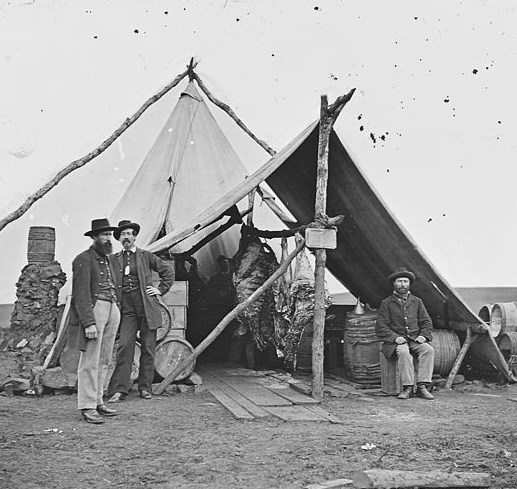
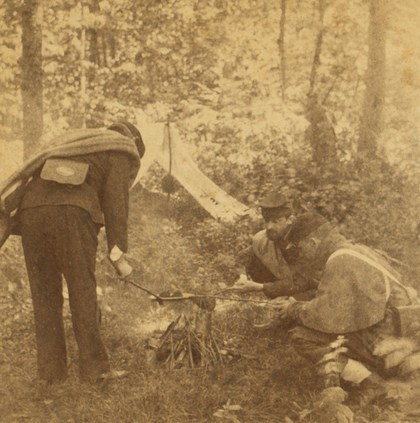



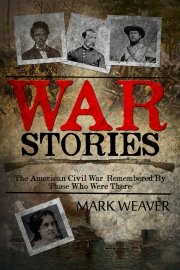

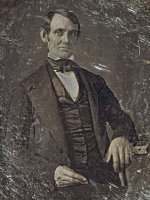
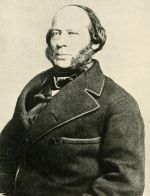
New! Comments
Have your say about what you just read! Leave me a comment in the box below.